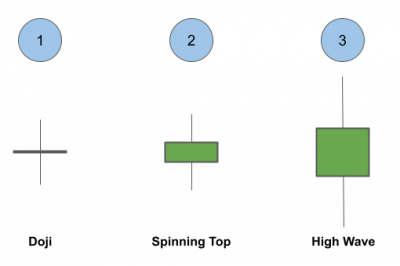Introduction
Have you ever been in a situation where you entered a trade confidently but weren’t able to decide what to do when the tide turned against you?
Traders dedicate a lot of their time researching about good entry conditions not realizing that exits are also an important aspect of a great trading strategy. The trade is not complete, until and unless you exit the trade. The profits or losses cannot keep running for an extended period of time if trading is what you intend to do.
Bruce Kovner, an American investor and Fund manager once said :
“I know where I’m getting out before I get in.”
A good exit plan lets you take the profit and exit when the trade is in your favor. And more importantly, it lets you exit when the market goes against you. Hence it also acts as a mechanism to protect your capital in adverse times. You cannot enter the market without an exit plan. In this sense, your exit is as important as your entry.
Streak platform provides you with the flexibility to implement your exit strategy in 5 different ways. Going forward, we are going to explore them one by one.
I) Only Indicator-Based Exit Conditions
This type of exit lets you come out of your trade whenever the indicators start indicating that the trade is not in your favor anymore. Suppose you have created a golden crossover strategy and want to exit as soon as the SMA 50 moves back below the Moving Average 200, you can mention this condition in the exit condition. Since Stoploss and Target fields are compulsory to run the backtest, you can put a high value such as 99% in both so that the exit happens only based on the indicator based exit condition. Below is an example :
What happens if the indicator based exit condition is satisfied ?
Once the exit condition is satisfied, a notification will be immediately delivered on your device. You can click on the notification and exit the trade.
II) Stop-loss and Target based Exit Conditions
The exit condition can also be created in such a way that the exit happens only if Stop-Loss or the Target is met. Unlike entry and exit conditions, Stoploss and Target is tracked based on LTP (Last Traded Price). The system accepts percentage-based target and stoploss. Other methods will be released very soon.
If you intend to use a fixed point-based SL/TP, the point can be converted to an approximate percentage. For eg. If a stock is trading around 1000 rupees, for 10 rupees SL/TP, 1% can be used.
For this option, the strategy exit condition should be left empty. An example is shown in the image below :
What happens if Stop-loss or the Target price is hit ?
There can be two scenarios here.
- If you place SL-M order
If the SL-M order has been placed and the price hits the Stoploss price as mentioned in the strategy, the SL-M order will get triggered and the position will be automatically exited. But if the target is hit, the execution will not be automatic. A notification will be delivered to the user as SL-M order works only for Stop-loss.
How to place SL-M ?
After each entry is taken, the system will immediately send a notification to place an SL-M order. User has the option to click on the notification and place an SL-M order.
You can learn more about SL-M orders by visiting : https://support.zerodha.com/category/trading-and-markets/margin-leverage-and-product-and-order-types/articles/what-are-stop-loss-orders-and-how-to-use-them
- If SL-M is not placed
In case SL-M is not placed, an exit notification will be generated in both the cases, whether the stop-loss or the target is hit.
III) A combination of Indicators and Stoploss/Target
The last two options we discussed were about creating either indicator or Stop-loss/Target based exits. But you can also choose to exit by combining both approaches. For this to work, you can input a preferred condition under exit condition and also input the stop-loss and target. It works like this :
Exit Condition OR Stop-loss OR Target
If either of these occurs, an exit notification will be delivered to the user. You can also choose to place an SL-M with this implementation as well. SL-M order has been explained above in the article.
IV) Using Nth candle indicator for time-based exit conditions
Some users prefer to have a time-based stop-loss. To implement this, a user can use the Nth candle indicator. However, this will work only for intraday strategies.
What is the Nth candle indicator ?
You can use the Nth candle indicator to access the Nth candle’s Open, High, Low, and Close of any candle for that day. The candle number starts with ‘1’ which represents the 1st candle of the day and ‘2’ represents the 2nd candle of the day.
Here is an example of how to implement it in the exit condition :
This condition will generate an exit notification as soon as the 11th 15 min candle of the day i.e the 11:45 15 min candle closes at 12:00. Hence you can use this condition if you want to exit your position at 12:00. Similarly, you can create a condition to exit at any time of the day.
Note : If you implement the above example in the Advanced mode of the strategy, the parameter should be 11 but if you implement it in the basic mode of the strategy, the parameter should be 10, as in the basic mode, the Nth candle is established only after the closing of the very next candle to the nth candle. You should also limit the entry time accordingly so that the entries happen only before the exit time.
V) Using indicators for trailing stop-loss as an exit condition
You can use certain indicators like ATR trailing stop-loss, supertrend, and PSAR to implement trailing stops while backtesting as well as live deployment. Below is an example of ATR trailing stop-loss :
Along with this, a high number (eg. 99) in Stop-loss and Target inputs can be provided if you intend to exit only based on the trailing stop loss indicator and not based on fixed target or stop loss.
Conclusion
In this article, we have discussed 5 different ways in which you can implement Exits on the Streak platform. Exit conditions are as important as entry conditions as it helps us in securing profits and limiting losses. You can use the methods independently or in a combination. You should backtest the conditions to evaluate the historical performance.
Disclaimer: The information provided is solely for educational purposes and does not constitute a recommendation to buy, sell, or otherwise deal in investments.










What if I want to exit on profit or loss amount? e.g if loss >= 1500 exit the basket order. do you have this facility?
Do you want to exit all the stocks in a strategy based on the total P&L of all the stocks combined?
Yes. Right. Can you show me how to do that plz?
This Feature is in the pipeline. It should be released soon
Pingback: Common Reasons For Negative Strategy Returns And Their Solutions - Streak Tech